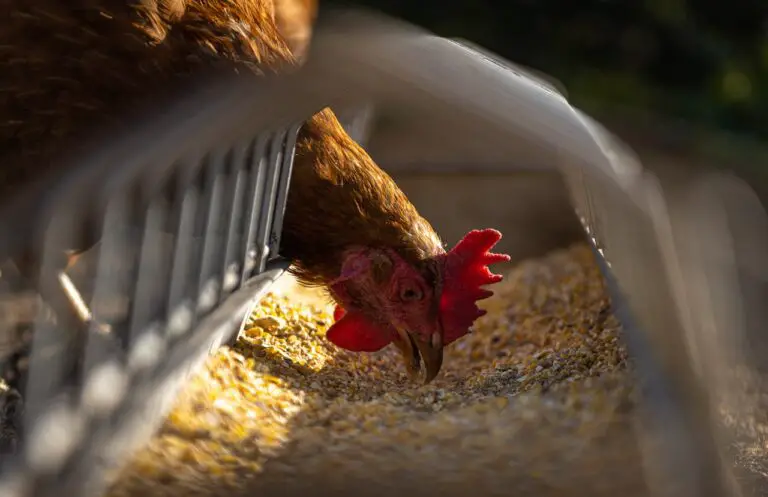10 Reasons Why Are My Chickens Bald?

Raising chickens can be a rewarding experience, providing fresh eggs and a bit of farm life charm. However, it can also come with its own set of challenges. One issue that often perplexes chicken owners is the sight of their birds losing feathers, leading to bald patches. Understanding the reasons behind this phenomenon is crucial for maintaining a healthy flock. This article will explore ten common reasons why your chickens might be losing feathers and becoming bald.
1. Molting
Molting is a natural process where chickens shed their old feathers to make way for new ones. This typically occurs annually and can last several weeks. During this time, chickens might appear scruffy or bald, particularly around the neck, back, and wings.
While molting is a normal part of a chicken’s life cycle, it can be stressful for the birds. Providing extra nutrients, especially protein, can help them through this period more comfortably. Ensure they have access to a balanced diet and consider adding supplements to support feather regrowth.
2. Broodiness
Broody hens often pluck their own feathers to line their nests and keep their eggs warm. This behavior is instinctual, as it helps create a cozy environment for incubating eggs. However, it can leave the hen with noticeable bald patches on her breast and belly.
To manage broodiness, you can try to break the broody cycle by removing the hen from the nesting area and encouraging her to rejoin the flock. Ensure she is eating and drinking adequately, as broody hens can sometimes neglect their own needs.
3. Parasites
External parasites like mites and lice can cause significant feather loss in chickens. These pests irritate the skin, leading chickens to peck and scratch at themselves, which results in feather loss and bald spots. Infestations are particularly common in warm, humid conditions.
Regularly check your chickens for signs of parasites, such as redness, scabs, or the presence of tiny insects. Treat infestations promptly with appropriate insecticides, and ensure the coop is cleaned and treated to prevent re-infestation.
4. Pecking Order
Chickens establish a social hierarchy known as the pecking order. Dominant birds may peck at subordinate ones, causing feather loss and bald patches. This behavior can be exacerbated in overcrowded or stressful conditions.
To reduce pecking order issues, provide ample space for your flock and ensure there are enough feeding and watering stations. Enriching the environment with perches and hiding spots can also help reduce stress and aggression.
5. Nutritional Deficiencies
A poor diet lacking essential nutrients can lead to feather loss. Chickens require a balanced diet rich in proteins, vitamins, and minerals to maintain healthy feathers. Deficiencies, particularly in protein, can cause brittle feathers that break easily.
Ensure your chickens receive a well-balanced feed formulated for their specific needs. Supplement their diet with fresh greens, fruits, and occasional protein sources like mealworms to support feather health.
6. Stress
Stress can cause chickens to lose feathers. Common stressors include changes in their environment, predator threats, or extreme weather conditions. When chickens are stressed, they might engage in feather pecking or excessive preening, leading to bald spots.
Identify and mitigate sources of stress in your flock’s environment. Provide a secure, comfortable coop, and maintain a consistent routine to help your chickens feel safe and relaxed.
7. Overmating
In flocks with an imbalance of roosters to hens, overmating can occur. Roosters can be rough on hens during mating, causing feather loss and bald spots, particularly on the back and neck. This can also lead to skin injuries if not addressed.
Consider reducing the number of roosters or using hen saddles to protect the hens’ backs. Ensure that the hens have places to escape and rest away from the roosters if needed.
8. Disease
Certain diseases can cause feather loss in chickens. For instance, Marek’s disease and avian pox can lead to feather loss and other health issues. If your chickens are losing feathers and showing signs of illness, it’s essential to consult a veterinarian.
Regularly monitor your flock for signs of disease and maintain good biosecurity practices to prevent the spread of infections. Vaccinations and prompt treatment of sick birds are crucial for maintaining flock health.
9. Genetics
Some breeds are more prone to feather loss than others due to genetic factors. For example, the Naked Neck or Turken breed naturally has fewer feathers, particularly on the neck. While this isn’t true baldness, it can appear alarming to those unfamiliar with the breed.
If you have a breed prone to sparse feathering, understanding their specific needs and characteristics can help you manage their care effectively. Research the breed’s requirements to ensure they stay healthy and comfortable.
10. Environmental Factors
Environmental factors like poor ventilation, damp conditions, or exposure to chemicals can affect feather health. Dust and ammonia buildup in the coop can irritate the chickens’ skin, leading to feather loss.
Maintain a clean, well-ventilated coop to prevent environmental causes of feather loss. Regularly clean bedding and ensure proper airflow to reduce the risk of respiratory issues and skin irritation.






